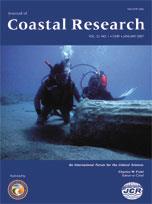Schinus terebinthifolius Raddi (Schinus) is one of the most widely found woody exotic species in South Florida. This exotic is distributed across environments with different hydrologic regimes, from upland pine forests to the edges of sawgrass marshes and into saline mangrove forests. To determine if this invasive exotic had different physiological attributes compared to native species in a coastal habitat, we measured predawn xylem water potentials (Ψ), oxygen stable isotope signatures (δ18O), and sodium (Na ) and potassium (K ) contents of sap water from plants within: (1) a transition zone (between a mangrove forest and upland pineland) and (2) an upland pineland in Southwest Florida. Under dynamic salinity and hydrologic conditions, Ψ of Schinus appeared less subject to fluctuations caused by seasonality when compared with native species. Although stem water δ18O values could not be used to distinguish the depth of Schinus and native species' water uptake in the transition zone, Ψ and sap Na /K patterns showed that Schinus was less of a salt excluder relative to the native upland species during the dry season. This exotic also exhibited Na /K ratios similar to the mangrove species, indicating some salinity tolerance. In the upland pineland, Schinus water uptake patterns were not significantly different from those of native species. Differences between Schinus and native upland species, however, may provide this exotic an advantage over native species within mangrove transition zones.
How to translate text using browser tools
1 January 2007
Water Uptake Patterns of an Invasive Exotic Plant in Coastal Saline Habitats
Sharon M. L. Ewe,
Leonel da Silveira Lobo Sternberg
ACCESS THE FULL ARTICLE

Journal of Coastal Research
Vol. 2007 • No. 231
January 2007
Vol. 2007 • No. 231
January 2007
Brazilian pepper
Na /K ratios
salinity
stable isotopes
Water potential




